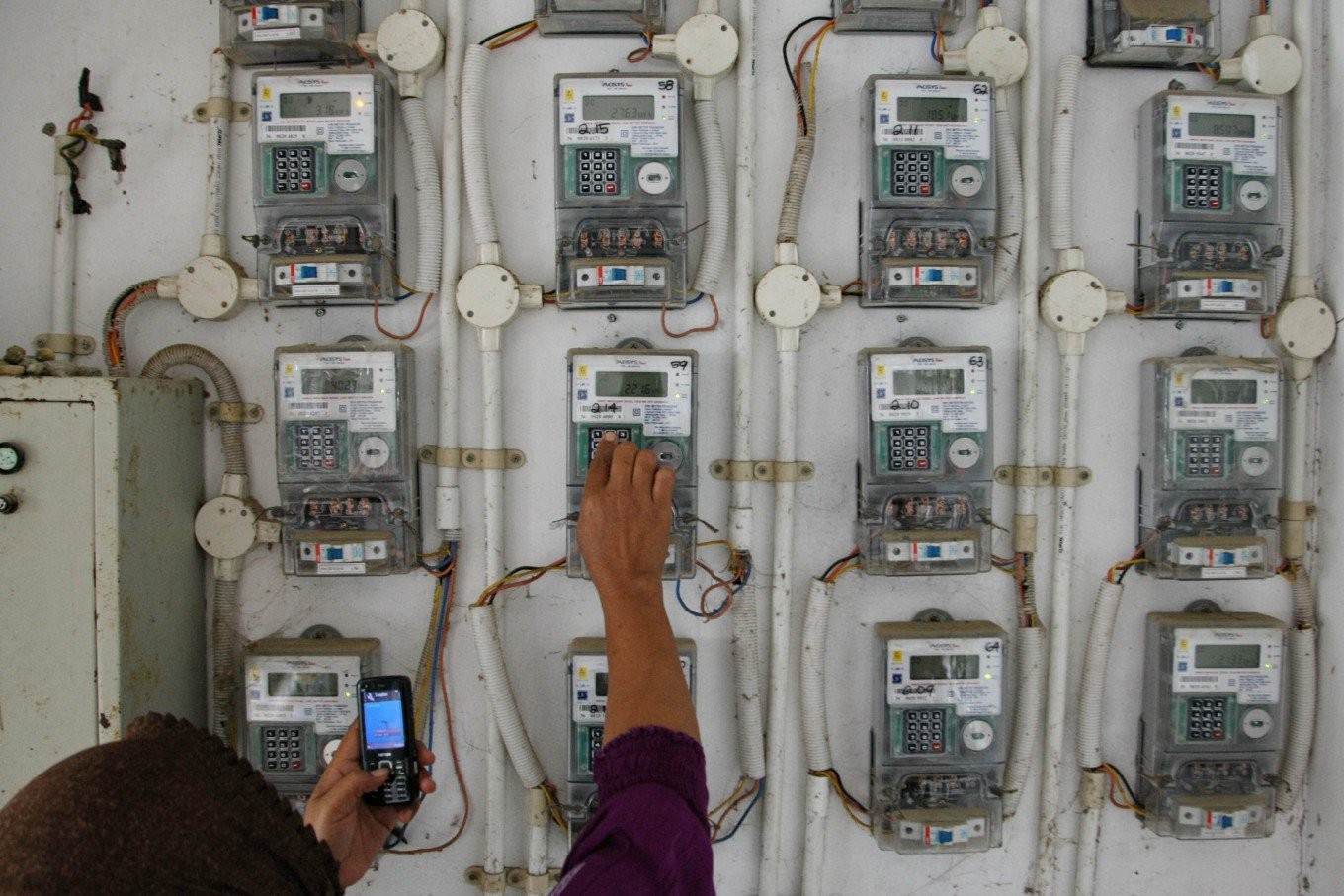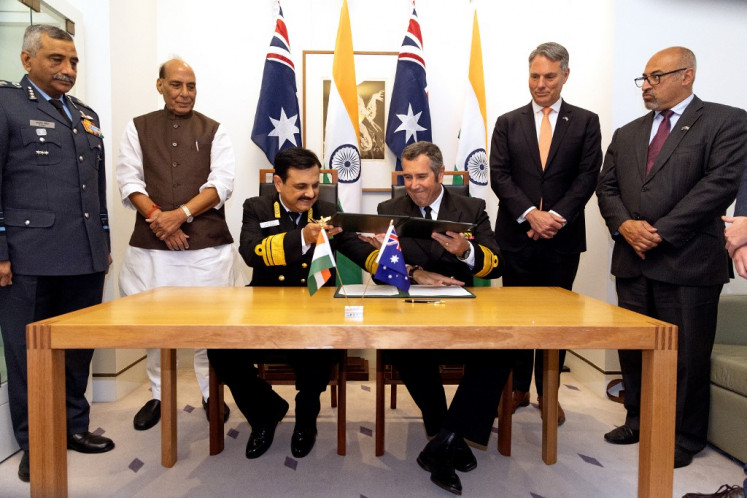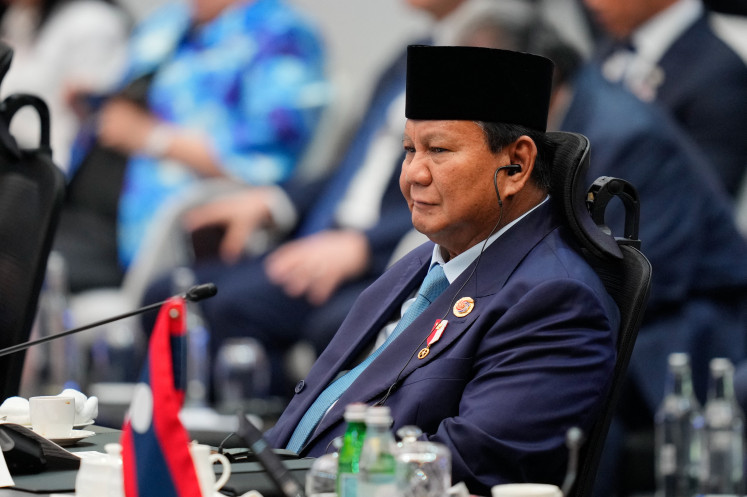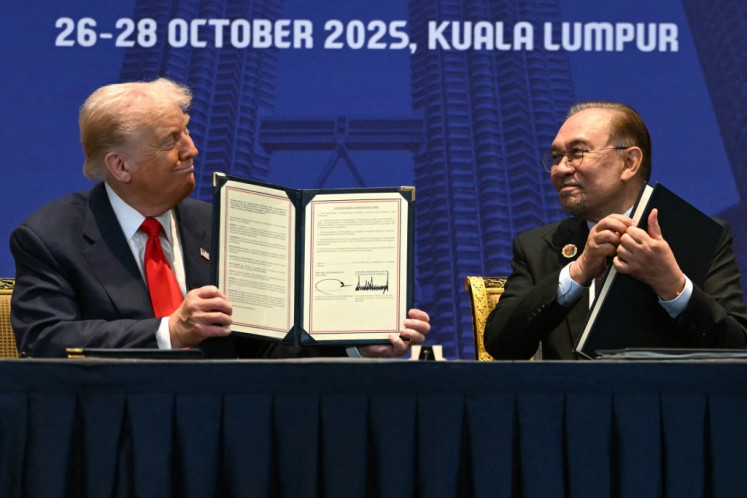Popular Reads
Top Results
Can't find what you're looking for?
View all search resultsPopular Reads
Top Results
Can't find what you're looking for?
View all search resultsTrading off electrification and climate change
There seems to be a dilemma between electrification and mitigation of climate change. But do we really need to choose one over the other?
Change text size
Gift Premium Articles
to Anyone
I
ndonesia celebrates National Electricity Day on Oct. 27, marking the date when President Sukarno established the Electricity and Gas Bureau soon after our independence.
At that time, the power supply capacity was only 158 megawatts (MWs). After 70 years of independence, the supply capacity has reached 53,000 MWs. Yet more than 10 million Indonesian households still do not have access to electricity.
The government takes this problem seriously. In 2006, then president Susilo Bambang Yudhoyono’s administration launched phase one of the 10,000 MW fast-track program (FTP-1), followed by another 10,000 MW program (FTP-2) in 2010. Five years later, Jokowi set an even more ambitious target, to complete building 35,000 MWs worth of power plants by 2019.
Despite its great benefit to society, the provision of electricity has consequences for the environment. The electricity production directly leads to emission of carbon dioxide ( CO2 ), one of the greenhouse gasses responsible for global climate change.
According to the Inter-Governmental Panel on Climate Change (IPCC), 25 percent of global CO2 emissions were the result of electricity and heat production.
In Indonesia, the power sector is highly dependent on fossil fuels. According to the Electricity Supply Business Plan 2016-2025 (RUPTL), 89 percent of electricity production in 2016 is sourced from fossil fuels. This results in more than 200 million tons of CO2 emissions.
At the same time, as an archipelagic country with extensive low-lying and small islands areas, Indonesia is highly vulnerable to the adverse impact of climate change. Indonesia is included as one of the 30 countries at “extreme risk” due to climate change.
The risks include the increased mean of wet season rainfall, increased length of the dry season, increase in the intensity and frequency of extreme events such as El Niño, the increase of floods during the rainy season, as well as the increase of drought in the dry season. All these will affect a wide range of activities in Indonesia.
There seems to be a dilemma between electrification and mitigation of climate change. But do we really need to choose one over the other? First, let us see from the policy perspective. The National Energy Policy 2014 (NEP) aimed at nearly 100 percent of electrification by 2020.
The NEP also aimed at a mixed energy use with 23 percent coming from new and renewable energy by 2025. Hence, the NEP promotes renewable energy for electrification. This will result in lower carbon emissions compared to the business as usual. Based on this we can conclude that policy framework is in place to address low carbon electrification.
Second, let us take a look from the implementation perspective. The draft of the National Electricity General Plan 2015-2034 (RUKN) translates the NEP into long-term power sector planning. The RUKN promotes the development of renewable energy and the use of clean coal technology (CCT) as the measures to reduce CO2 emissions.
Nuclear power is also considered as an option.
Taking RUKN as a reference, the RUPTL provides more pragmatic planning and covers a shorter period. The RUPTL confirms that it is achievable to have nearly a 20 percent share of renewable energy in power generation mix by 2025. Accomplishment of this plan will reduce 22 percent of CO2 emissions compared to the business as usual scenario. Hence, we can conclude that low carbon electrification is realistic.
However, low carbon electrification leads to higher costs. The RUPTL estimates a cost of US$110 billion to achieve 20 percent share of renewable energy in the power generation mix. Furthermore, adding the renewable energy share up to 25 percent will increase the cost to $160 billion.
The question is then, who will pay for these costs? Business-wise, the independent power producers (IPPs) aim to gain profit from producing electricity. Hence, they sell electricity to PLN at its economic price.
Referring to feed in tariff policies, state power operator PLN is obliged to purchase renewable energy at determined ceiling prices. The policies’ intention is to attract more IPP investment in renewable energy. However, the electricity generation costs from renewable energy are generally higher compared to the electricity rate paid by the consumers. Since PLN is wholly owned by the government, it is up to the government to decide whether they will increase the electricity subsidy or increase the electricity rates.
Most consumers would be reluctant to pay more for electricity. However, in some countries such as the Netherlands, consumers voluntarily sign up for a green electricity product. This product sets a higher price for electricity. With this price, an energy utility company ensures that they produce the electricity from renewable energy sources.
This kind of product is not available in Indonesia. However, it does not mean that we as consumers cannot participate in reducing carbon emissions. There are alternative measures such as changing the way we consume electricity and using energy-saving electric appliances. The former action is relatively easy and free and includes unplugging non-used electric appliances, turning off unneeded lighting and setting the air conditioner at 25°Celsius instead of 20°Celcius. The latter action may be costly at the beginning but it will be paid off through the reduced amount in monthly electricity bills.
Installation of solar panels on the rooftop can be an option for consumers who have enough capital. They can consume the electricity produced by the solar panel and thus lower their monthly bill paid to PLN. We can learn from Germany’s experiences about citizen involvement in energy transition. German households and citizens are able to cover half of investments required for the country’s transition to renewable energy.
Low carbon electricity may seem costly, but dealing with the adverse impacts of climate change will be even more costly. If we act now, we prevent the worst impact of climate change. But if we do not care, our future generations will bear a higher fare.
***
The writer is conducting research on climate change mitigation and adaptation in the Indonesian power sector for a PhD degree at Department of Governance and Technology for Sustainability, University of Twente, the Netherlands. Her research is funded by the Indonesian Endowment Fund (LPDP).
---------------
We are looking for information, opinions, and in-depth analysis from experts or scholars in a variety of fields. We choose articles based on facts or opinions about general news, as well as quality analysis and commentary about Indonesia or international events. Send your piece to community@jakpost.com. Click here for more information.










